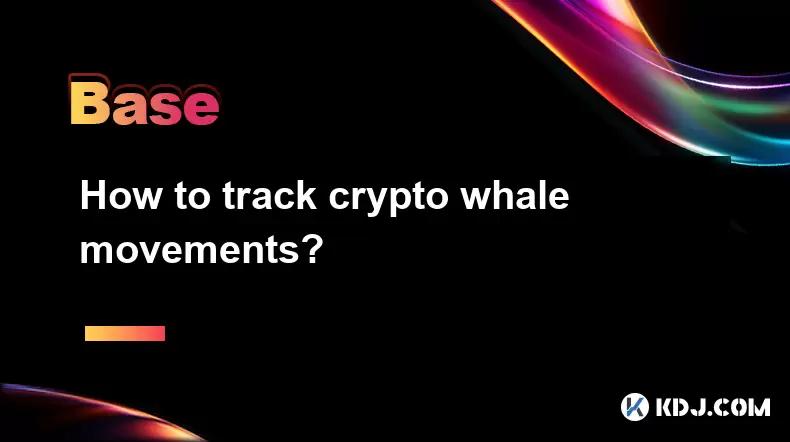-
 Bitcoin
Bitcoin $118400
0.39% -
 Ethereum
Ethereum $3814
2.17% -
 XRP
XRP $3.547
1.34% -
 Tether USDt
Tether USDt $1.000
0.00% -
 BNB
BNB $769.5
2.95% -
 Solana
Solana $191.7
6.36% -
 USDC
USDC $0.9999
0.01% -
 Dogecoin
Dogecoin $0.2722
7.75% -
 Cardano
Cardano $0.8995
5.59% -
 TRON
TRON $0.3158
-0.78% -
 Hyperliquid
Hyperliquid $47.37
4.46% -
 Stellar
Stellar $0.4848
3.54% -
 Sui
Sui $4.031
1.72% -
 Chainlink
Chainlink $20.11
3.94% -
 Hedera
Hedera $0.2832
3.16% -
 Avalanche
Avalanche $26.20
4.27% -
 Bitcoin Cash
Bitcoin Cash $530.5
0.67% -
 Shiba Inu
Shiba Inu $0.00001568
3.59% -
 Litecoin
Litecoin $118.4
1.42% -
 UNUS SED LEO
UNUS SED LEO $8.976
-0.23% -
 Toncoin
Toncoin $3.349
2.54% -
 Polkadot
Polkadot $4.590
2.54% -
 Uniswap
Uniswap $10.56
-0.59% -
 Ethena USDe
Ethena USDe $1.001
0.00% -
 Monero
Monero $327.7
0.39% -
 Pepe
Pepe $0.00001422
2.62% -
 Bitget Token
Bitget Token $4.973
-1.22% -
 Dai
Dai $1.000
0.02% -
 Aave
Aave $331.9
1.59% -
 Bittensor
Bittensor $429.6
-0.56%
How to track crypto whale movements?
Crypto whales, holding vast amounts of cryptocurrency, can sway market prices through large transactions, making their movements key indicators for traders and analysts.
Jul 21, 2025 at 05:42 am

Understanding the Concept of Crypto Whales
In the world of cryptocurrency, a whale refers to an individual or organization that holds a large amount of a particular cryptocurrency. These entities have the potential to significantly influence market prices due to the volume of their holdings. Tracking whale movements is a popular activity among traders and analysts seeking to anticipate market trends. Whale movements can signal accumulation, distribution, or even manipulation of prices.
Understanding whale behavior starts with identifying large transactions on the blockchain. Because most cryptocurrencies operate on public ledgers, it's possible to monitor large transfers and analyze patterns. This allows observers to make educated guesses about potential market shifts based on whale activities.
Using Blockchain Explorers for Whale Tracking
One of the primary tools for tracking whale movements is a blockchain explorer. These platforms allow users to view transaction details, wallet balances, and network activity. Popular explorers like Etherscan for Ethereum, Blockchair for Bitcoin, and BscScan for Binance Smart Chain provide real-time data that can be used to identify whale transactions.
Here’s how to effectively use a blockchain explorer for whale tracking:
- Identify large transactions by looking at the transaction value. Transactions involving thousands or millions of dollars are often whale-related.
- Follow the sending and receiving addresses. Many whale wallets are well-known or can be tagged for future reference.
- Monitor wallet balances. If a wallet suddenly empties or receives a large influx, it could signal whale activity.
Some explorers allow users to set up alerts or notifications for specific addresses, making it easier to stay updated on whale movements in real-time.
Leveraging Whale Tracking Platforms
Beyond standard blockchain explorers, specialized platforms exist to help users track whale behavior more efficiently. Whale tracking platforms like Whale Alert, Lookonchain, and Chainalysis provide curated insights and alerts regarding large crypto transfers.
These platforms aggregate data from multiple blockchains and present whale movements in a user-friendly format. Features typically include:
- Real-time alerts for whale transactions across various networks.
- Visualization tools to understand the flow of funds between wallets.
- Historical data analysis to identify recurring whale patterns.
Many of these services offer both free and premium tiers. Premium subscriptions often include advanced filtering, custom alerts, and access to private wallet tracking tools.
Monitoring On-Chain Analytics Tools
For a deeper understanding of whale behavior, on-chain analytics tools offer a more comprehensive view. Platforms like Glassnode, CryptoQuant, and Dune Analytics provide sophisticated metrics that go beyond simple transaction tracking.
These tools analyze blockchain data to reveal trends such as:
- Exchange inflows and outflows, which can indicate whale movement toward or away from exchanges.
- Large holder balances, showing how much a whale has accumulated or sold over time.
- Network congestion and transaction fees, which can hint at whale activity during high volatility periods.
Users can set up dashboards to monitor specific metrics and receive alerts when whale-related thresholds are met. These tools often require a basic understanding of on-chain metrics, but they provide invaluable insights for serious analysts.
Utilizing Social Media and Community Monitoring
In addition to technical tools, monitoring social media and community forums can provide clues about whale movements. Platforms like Twitter, Telegram, and Reddit often buzz with discussions about large transactions or suspicious wallet activity.
Here’s how to use social media for whale tracking:
- Follow verified crypto analytics accounts that share real-time whale alerts.
- Join dedicated Telegram groups or Discord servers focused on blockchain tracking and market analysis.
- Watch for community speculation or reports about large movements on specific chains.
While this method isn't always reliable, combining it with blockchain data can enhance accuracy. Always verify information through explorers or analytics platforms before drawing conclusions.
Frequently Asked Questions
What is the minimum transaction size considered whale activity?
There is no fixed minimum, as it depends on the cryptocurrency. For Bitcoin, transactions involving hundreds or thousands of BTC are typically whale-related. For altcoins, the threshold varies widely depending on market cap and tokenomics.
Can whale movements be hidden or obfuscated?
Yes, whales can use privacy coins, mixers, or multiple wallets to obscure their movements. However, on transparent blockchains like Bitcoin and Ethereum, large transfers are still visible even if the intent is disguised.
Are whale alerts reliable for making trading decisions?
Whale alerts can provide useful signals, but they should not be the sole basis for trading. Always combine whale tracking with technical and fundamental analysis to reduce risk.
Is tracking whale activity legal?
Yes, tracking whale activity on public blockchains is completely legal. It involves analyzing publicly available data and does not infringe on privacy laws as long as personal information is not targeted.
Disclaimer:info@kdj.com
The information provided is not trading advice. kdj.com does not assume any responsibility for any investments made based on the information provided in this article. Cryptocurrencies are highly volatile and it is highly recommended that you invest with caution after thorough research!
If you believe that the content used on this website infringes your copyright, please contact us immediately (info@kdj.com) and we will delete it promptly.
- Crypto Stocks, Stablecoin Law & Trump: A New Era?
- 2025-07-22 02:30:12
- Kaito, Web3, and Crowdfunding: A New Era of Capital Alignment?
- 2025-07-22 02:30:12
- Saylor, Trump, and Bitcoin: A New York Minute on Crypto's Power Trio
- 2025-07-22 00:50:12
- Strategy, Bitcoin, and $122,000: A New York Minute on Crypto's Latest Moves
- 2025-07-22 00:50:12
- Dogecoin Price Prediction: Will the Pump Continue?
- 2025-07-22 01:50:12
- AVAX Price, Mining Rewards, and PI Price: What's the Buzz?
- 2025-07-22 01:50:12
Related knowledge

What is the difference between CeFi and DeFi?
Jul 22,2025 at 12:28am
Understanding CeFi and DeFiIn the world of cryptocurrency, CeFi (Centralized Finance) and DeFi (Decentralized Finance) represent two distinct financia...

What is the difference between a sidechain and a Layer 2?
Jul 20,2025 at 11:35pm
Understanding the Concept of SidechainsA sidechain is a separate blockchain that runs parallel to the main blockchain, typically the mainnet of a cryp...

What is the Inter-Blockchain Communication Protocol (IBC)?
Jul 19,2025 at 10:43am
Understanding the Inter-Blockchain Communication Protocol (IBC)The Inter-Blockchain Communication Protocol (IBC) is a cross-chain communication protoc...

How does sharding improve scalability?
Jul 20,2025 at 01:21am
Understanding Sharding in BlockchainSharding is a database partitioning technique that is increasingly being adopted in blockchain technology to enhan...

What is the "crypto trilemma" of scalability, security, and decentralization?
Jul 19,2025 at 06:28pm
Understanding the Concept of the Crypto TrilemmaThe crypto trilemma refers to the challenge of simultaneously achieving scalability, security, and dec...

What is a cliff and vesting schedule in tokenomics?
Jul 20,2025 at 10:28am
What Does a Cliff Mean in Tokenomics?In tokenomics, a cliff refers to a specific period during which token holders are not allowed to access or transf...

What is the difference between CeFi and DeFi?
Jul 22,2025 at 12:28am
Understanding CeFi and DeFiIn the world of cryptocurrency, CeFi (Centralized Finance) and DeFi (Decentralized Finance) represent two distinct financia...

What is the difference between a sidechain and a Layer 2?
Jul 20,2025 at 11:35pm
Understanding the Concept of SidechainsA sidechain is a separate blockchain that runs parallel to the main blockchain, typically the mainnet of a cryp...

What is the Inter-Blockchain Communication Protocol (IBC)?
Jul 19,2025 at 10:43am
Understanding the Inter-Blockchain Communication Protocol (IBC)The Inter-Blockchain Communication Protocol (IBC) is a cross-chain communication protoc...

How does sharding improve scalability?
Jul 20,2025 at 01:21am
Understanding Sharding in BlockchainSharding is a database partitioning technique that is increasingly being adopted in blockchain technology to enhan...

What is the "crypto trilemma" of scalability, security, and decentralization?
Jul 19,2025 at 06:28pm
Understanding the Concept of the Crypto TrilemmaThe crypto trilemma refers to the challenge of simultaneously achieving scalability, security, and dec...

What is a cliff and vesting schedule in tokenomics?
Jul 20,2025 at 10:28am
What Does a Cliff Mean in Tokenomics?In tokenomics, a cliff refers to a specific period during which token holders are not allowed to access or transf...
See all articles

























































































